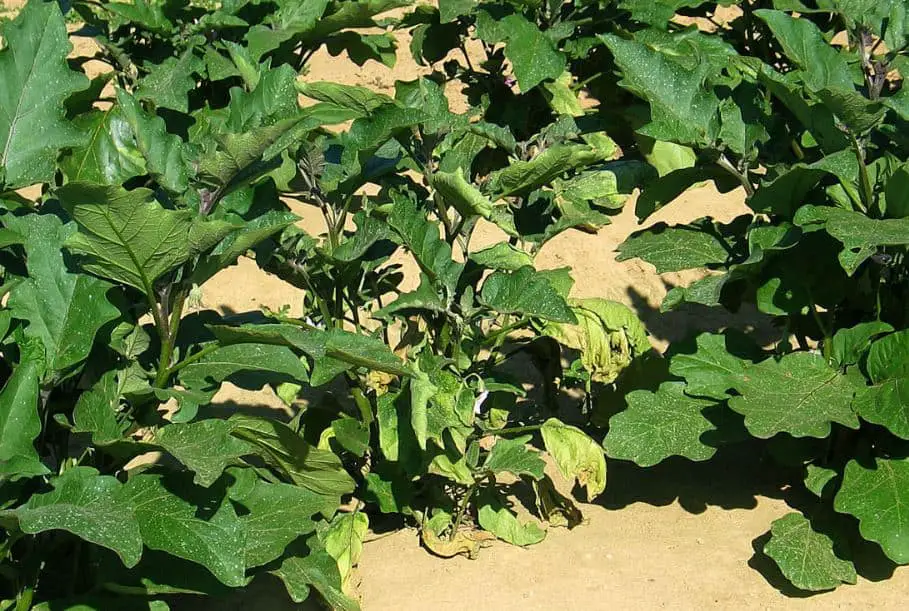Numerous plant species are susceptible to the pathogen that causes verticillium wilt. It comprises more than 300 host families, which include edible, decorative, and evergreen plants. Verticillium wilt in eggplant causes catastrophic crop loss. Even in areas with harsh weather, it may overwinter in the soil and last for years. Tobacco, eggplant, and potato plants, as well as other nightshade family members, are all negatively impacted. It is crucial to fully understand the symptoms and provide a precise diagnosis since they might be mistaken for those of several different disorders.

Symptoms of Verticillium Wilt in Eggplants
A fungus that thrives and overwinters in the soil for several years causes verticillium wilt in eggplant plants. It may also be found in cucurbits, evergreens, herbs, floral ornamentals, and even trees and nightshades. The illness affects the vascular tissue, preventing nutrients and water from moving freely. The plant will ultimately get stunted, stop producing usable fruit, and die. The plant matter has to be destroyed rather than added to a compost pile since it is still extremely infectious.
Eggplants that are yellowing and withering are a warning indication. Young plants develop yellowish-green, too-small leaves that cause them to become stunted. Because the illness may splash up on leaves, those nearest to the soil line usually exhibit symptoms of infection earliest. Eventually, the leaves margins fade, curl inward and become brown and dry. The illness will spread to more leaves and stems before reaching the roots.
A poison that the fungus secretes clogs up the vascular system and prevents water flow. In contrast to fusarium rot, yellows, and bacterial wilt, Verticillium tends to persist in temperate areas with cold soil. Verticillium wilt in eggplant may be distinguished from other widespread diseases by vascular streaking in the leaves and stems.
Preventing Eggplant Verticillium Wilt
An excellent method of lowering the risk of reinfection is annual cleaning. Old plant material serves as the pathogen’s host and has to be removed. Crop rotation could be advantageous, particularly with hosts of nightshades. Keep weeds away from the area since some serve as hosts for the illness.
Avoid contaminating fields by cleaning tools, equipment, and tyres. The fungus may also be managed by solarizing a portion of the soil.
Take advantage of resistant variants if at all possible. On the seed package, they will be identified by a “V”. The cultivars “Classic” and “Epic” seem to have strong disease resistance.
Eggplant Wilting Treatments
Unfortunately, no simple-to-use pesticides can be sprayed on a field or garden bed. Licensed applicators must handle the advised pesticides after testing to confirm that Verticillium is, in fact, the pathogen responsible for the illness. The most typical use is as a soil fumigant.
It has been shown that the fungicide benomyl may be used as a transplant dip to lessen contamination. However, it is only effective at the beginning and cannot protect roots after the plant has been placed in contaminated soil.
Treatment for verticillium wilt in eggplants is challenging. Even better are preventive measures, including resistant plant types, hygienic procedures, sterilized soil, and host plant removal.


